Top 10 Most Famous Buildings of Oxford
Oxford is well known for its outstanding architecture. From medieval colleges to grand baroque edifices, the city has more than its share of impressive landmarks.
But what are the most famous buildings of Oxford? In this piece, we’ll go through the top ten most renowned examples of Oxford’s architecture, exploring the fascinating history behind these celebrated buildings.
For more about the history of Oxford University, take a look at our in-depth guide.
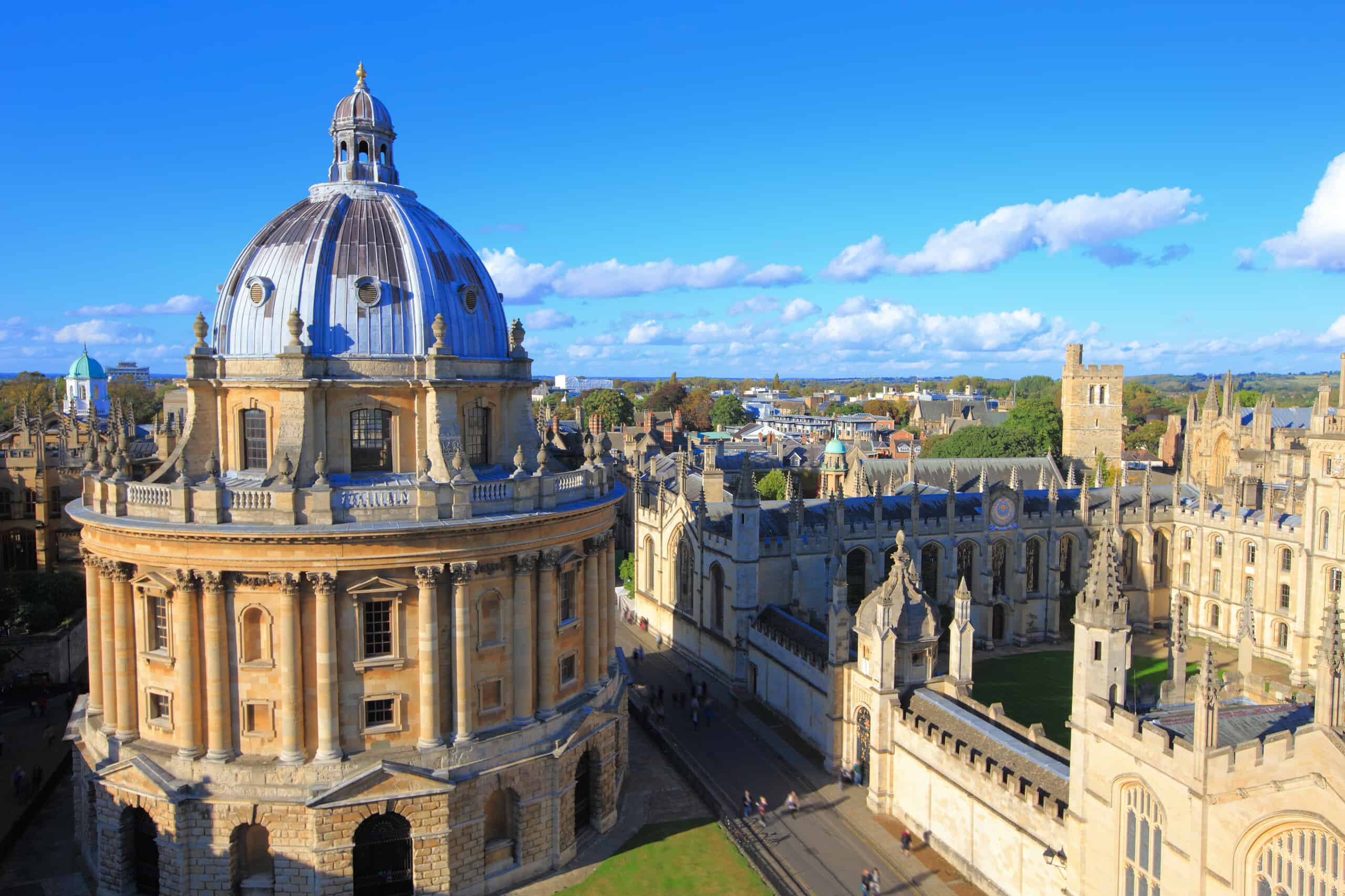
Radcliffe Camera
Perhaps the quintessential landmark of the city and certainly one of the most famous buildings of Oxford, the Radcliffe Camera was built after a design by James Gibbs in the mid-18th century. Constructed in the Baroque style, it was the first circular library in England. In 1744, the historian Thomas Salmon described the new Radcliffe library as “the most magnificent Structure in Oxford” – and many have concurred ever since.
It originally housed the Radcliffe Science Library, named after the physician John Radclfiffe, whose estate paid for the collection and the building. Initially, this was an independent library. However, in the 1850s, the then-librarian laid out plans for the library’s collections to be transferred to the Bodleian, Oxford University’s library.
The Radcliffe Library building became the Bodleian’s reading room in 1861, at which point it began to be known as the Radcliffe Camera.
Clarendon Building
Located on Broad Street and next to the Radcliffe Camera and Sheldonian Theatre, two of the other most famous buildings in Oxford, the Clarendon Building is a neoclassical building completed in 1715.
It was constructed in the neoclassical style following a design by Nicholas Hawksmoor and paid for by the Earl of Clarendon, from whom it got its name, from the proceeds of his History of the Great Rebellion. It initially house the Oxford University Press (which had previously been located in the basement of the Sheldonian Theatre), but the OUP moved out in the 1820s. Since 1975, the Clarendon Building has been part of the Bodleian Library and is used as offices for its senior staff.
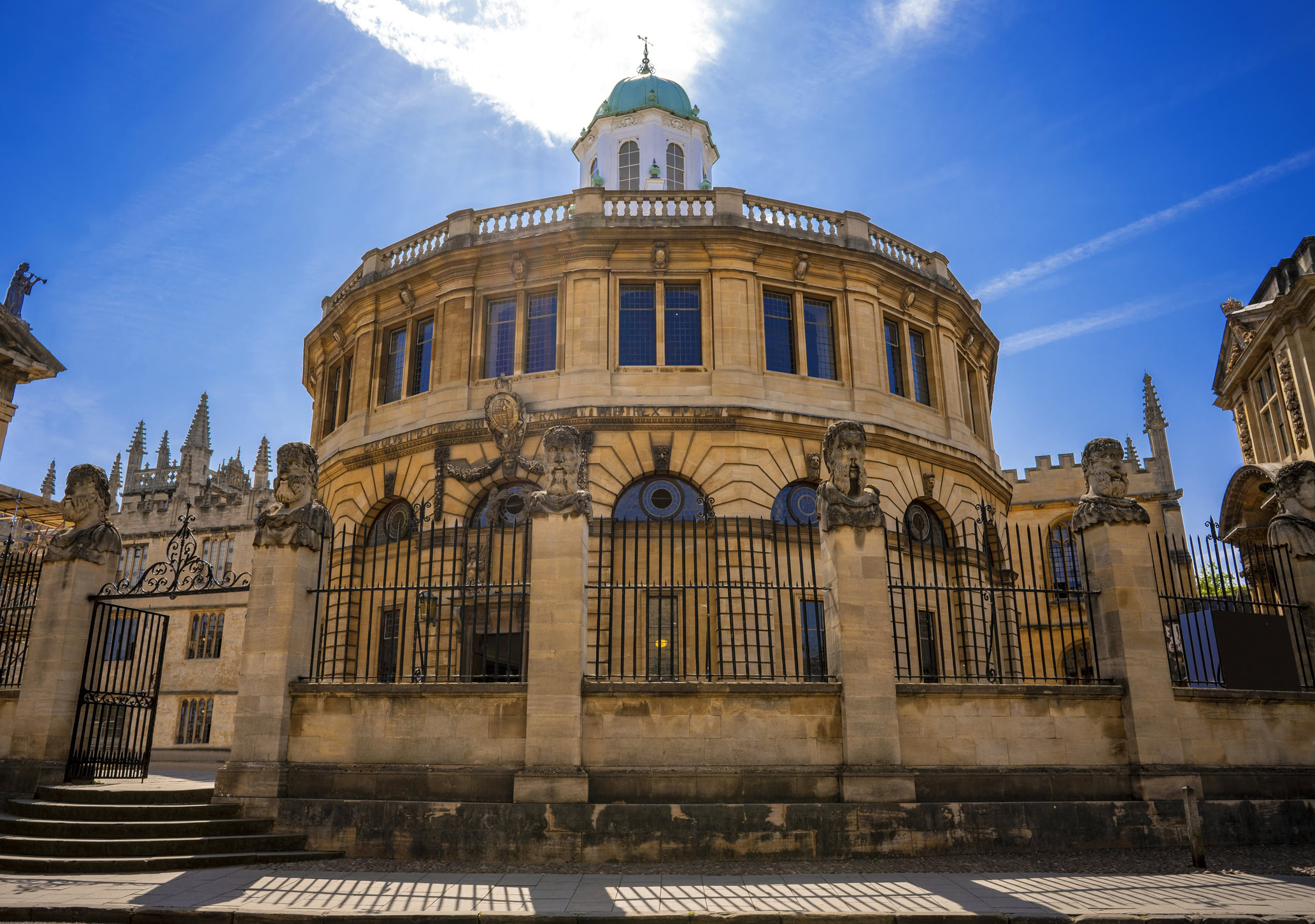
Sheldonian Theatre
The Sheldonian Theatre is a building constructed between 1664 and 1669, designed by the greatest English architect, Christopher Wren. It was funded by Gilbert Sheldon, Warden of All Souls College and later Chancellor of Oxford University.
It was intended as a building whose sole use would be to host Oxford’s graduation and degree ceremonies. Thought it is still used for this purpose to this day, it also houses concerts, lectures, and plays. Built in the English baroque style, the Sheldonian is well known for its cupola in the centre of its roof, and its ceiling fresco painted by Charles II’s court painter, Robert Streater.
Oxford Castle
Oxford Castle is a medieval fortification, originally built as a motte-and-bailey castle in the 1070s by the Normans, who had recently completed their conquest of England. Most of the castle was rebuilt in stone around the turn of the thirteenth century. It was largely destroyed in the English Civil War, and the remaining buildings were put to use as Oxford’s prison from the 1700s. The prison closed in 1996 and the castle ruins are now a visitor’s attraction.
The castle is perhaps best known for St George’s Tower. For a long time believed to have been built as part of the Norman castle, the tower is now thought to have been a Saxon watch tower overlooking the old west gate of Oxford.
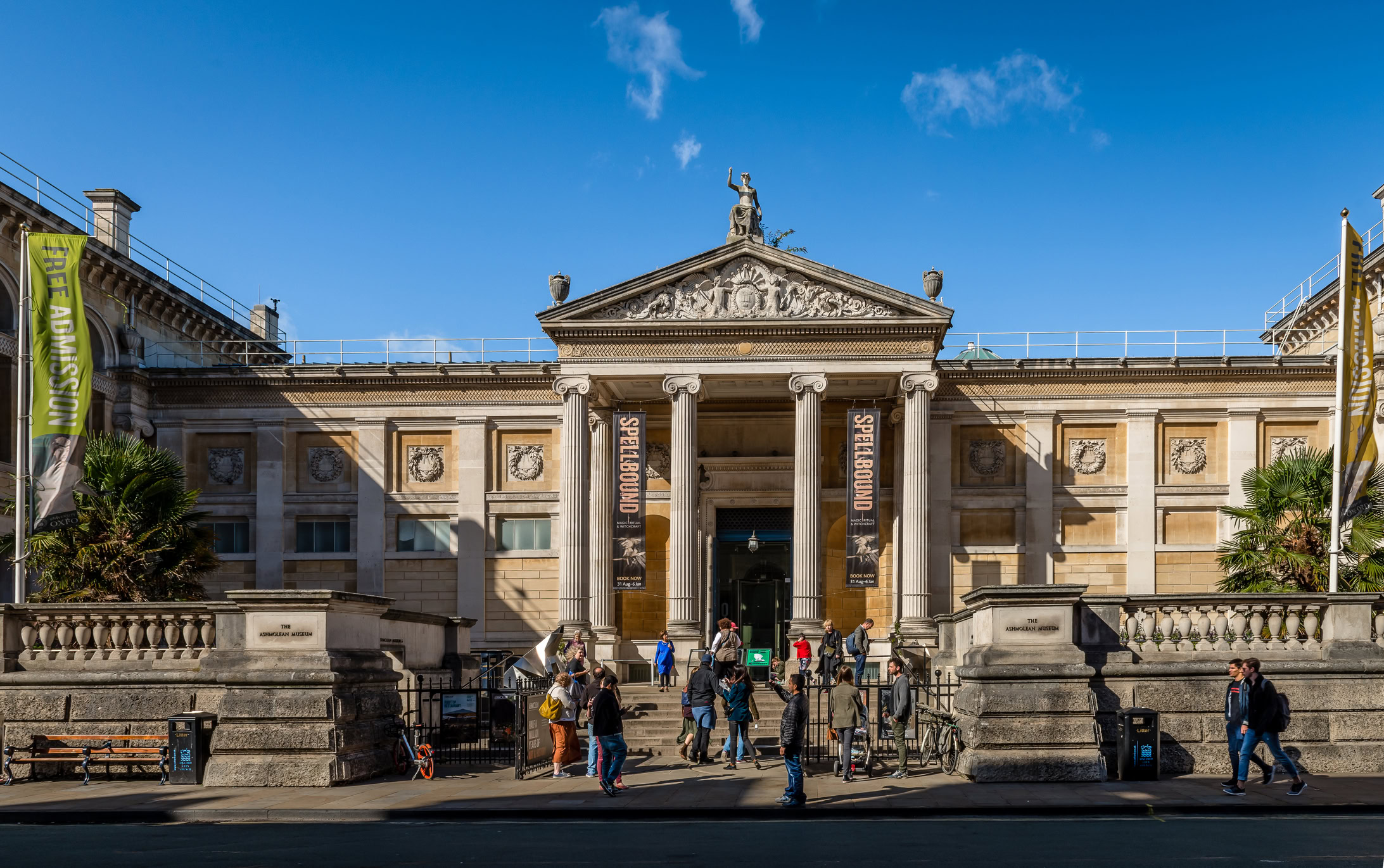
Ashmolean Museum
Of course, the Ashmolean Museum is most famous for what’s inside: its extensive collections of archaeological artefacts and fine art. However, the Ashmolean is also well known for the neoclassical building on Beaumont Street which has been its home since the 1890s.
The present building was built between 1841 and 1845 by the English architect Charles Cockerell as the University Art Galleries. The museum moved to the building in 1894 and combined its collection with the galleries in 1908, to create the museum as we know it today.
Oxford Town Hall
Oxford Town Hall is the seat of Oxford City Council. (Slightly confusingly, though Oxford is a city, the building is called the Town Hall!) In its current form, it is the third public building to have stood on the same site in St Aldate’s, central Oxford. Oxford’s guildhall was based there from the late thirteenth century before being replaced by a new building in 1752.
This building was deemed to be “ill shaped and not convenient” by the city authorities in the late nineteenth century, and it was decided to replace it. The current Town Hall was completed in 1897 following a design in the Jacobethan style by the architect Henry Hare. At its opening, the Oxford Chronicle declared the new Town Hall “magnificent” and one of “the finest rooms of its kind in the Kingdom”.
Today, the Town Hall also houses the Oxford Museum and hosts concerts and public events. The Rolling Stones, David Bowie, and Nelson Mandela have all appeared there.
Study in Oxford with our summer schools
Study Medicine, Law, English, and more at an Oxford University college on our incredible summer schools.
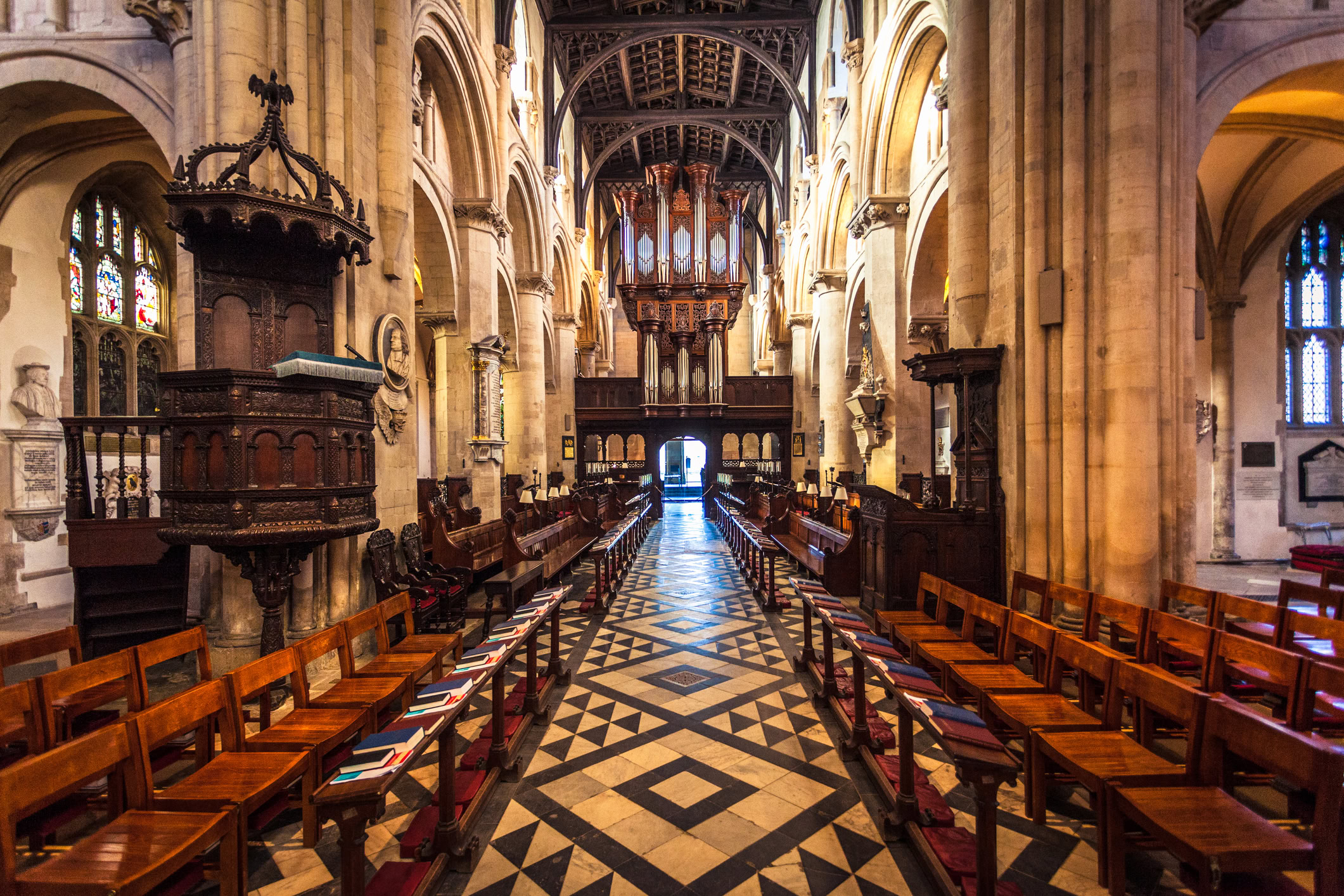
Christ Church Cathedral
Christ Church Cathedral is both the chapel of Christ Church College and the seat of the bishop of Oxford. There has been a church on the site since 1002; however, the basis of the present building was built in the second half of the twelfth century. Luckily for posterity, the cathedral narrowly avoided being destroyed by Henry VIII’s minister Thomas Wolsey, who wished to demolish it in order to build his own college.
It has undergone numerous developments and remodellings over its history. It was begun in the Romanesque style before being developed as a masterpiece of Gothic architecture, and was remodelled in the 19th century. The stone vaulted chancel ceiling is the most acclaimed feature of the cathedral today, and was constructed around the year 1400.
Christ Church Cathedral contains the Shrine of St Frideswide, the patron saint of the city, the university and the diocese of Oxford. Its spectacular stained glass windows date from a range of periods, with the oldest being the Becket Window which was created in 1320.

Bridge of Sighs
It might not strictly speaking be a building, but we couldn’t leave out the Bridge of Sighs, one of Oxford’s most iconic landmarks.
Officially called the Hertford Bridge, it is known as the Bridge of Sighs due to its supposed resemblance to the original Bridge of Sighs in Venice. A covered bridge with an arched base, it links the Old and New Quads of Hertford College (hence its official name) over New College Lane. It was completed in 1914, following a design by Sir Thomas Jackson.
There is also a Bridge of Sighs in Cambridge which was built in 1831, and as such predates the Oxford bridge by the better part of a century.
Exeter College Chapel
The first chapel at Exeter College was built in 1623 but by the early 19th century, it was feared to be structurally unsound. Additionally, the fellows of the college were influenced by the Oxford Movement, a movement of high church members of the Church of England, who desired a more visually impressive chapel.
The new chapel was designed by Gilbert Scott and completed in 1859. A masterpiece of neogothic religious architecture, the chapel was influenced by La Sainte-Chappelle in Paris. Construction ran over budget and had to be financed by a fundraising campaign and cutbacks in the college. It deserves its status as one of the most famous buildings of Oxford for its elaborate stonework, marble inlays, and stained glass windows.
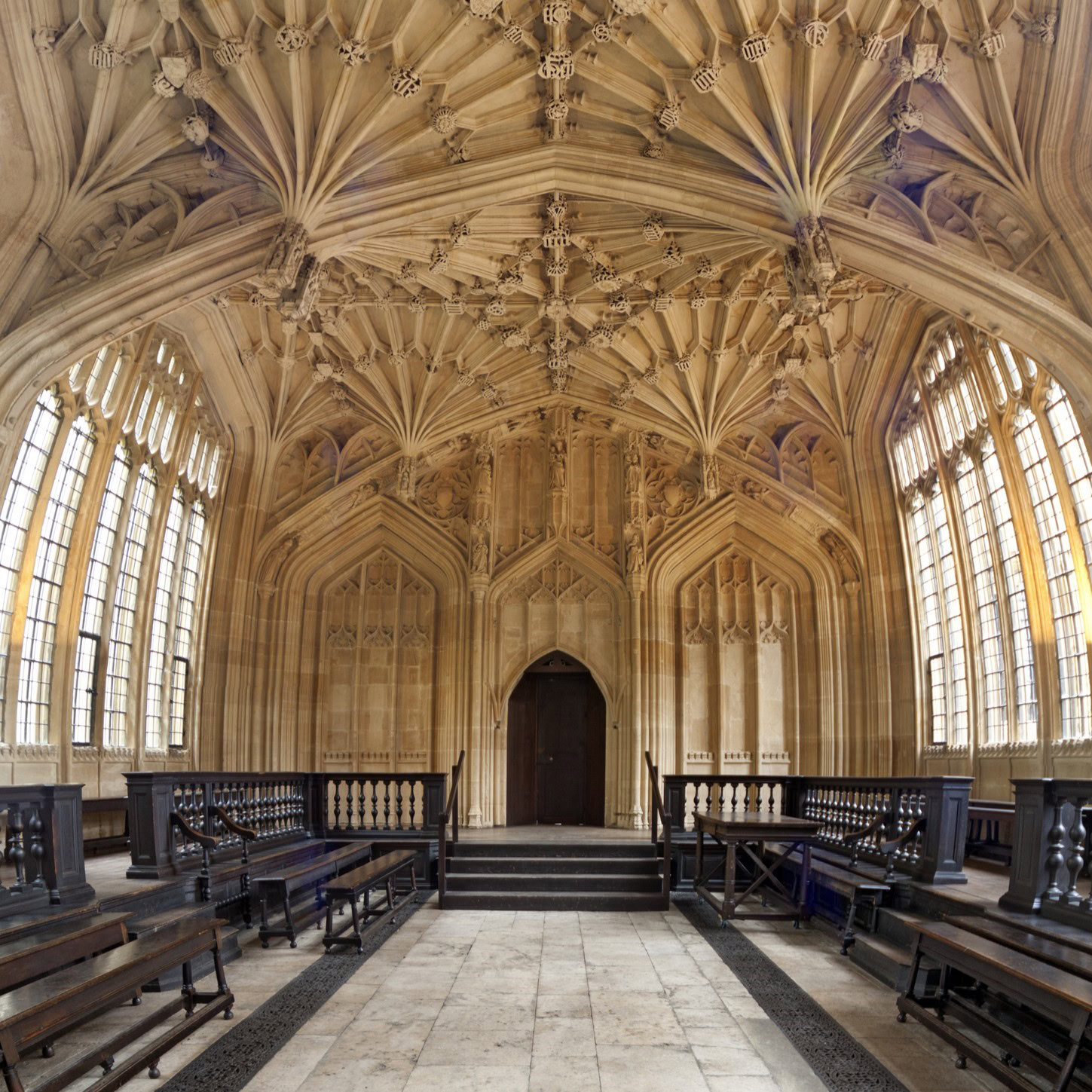
Divinity School
The Divinity School is a spectacular medieval building in Oxford, built in the Perpendicular Gothic style in the mid-15th century. It is the oldest surviving purpose-built university building in the world. (If you’re interested, we have a guide on the oldest universities on earth.)
It was designed to house Oxford’s lectures, debates, and exams on theology in the late medieval period. It is known for its elaborate vaulted ceiling, designed by William Orchard in the 1480s. When Charles I moved parliament to Oxford during the Civil War, the rump of royalist parliamentarians sat in the Divinity School. It is famous today for appearing as the Hogwarts infirmary in Harry Potter and the Philosopher’s Stone.
3x your chances of Oxford admission
Applying to Oxford? Our students have an acceptance rate 3x higher than average.
Take a look at our application support to see how we can improve your chances.
Conclusion: Most Famous Buildings of Oxford
Oxford is a city where history, learning, and architectural splendour come together like few other places in the world. Each building in this list offers a glimpse into a different era of the city’s long and distinguished past—from medieval castles to baroque theatres, and neoclassical museums to gothic chapels.
These iconic landmarks do more than simply decorate the skyline; they tell the story of a world-renowned university and the city that grew around it. Whether you’re a student, a historian, or a curious visitor, exploring the most famous buildings of Oxford is an unforgettable way to experience the city’s rich heritage.
FAQs
Oxford is home to many historic and architecturally significant buildings. Some of the most famous buildings of Oxford include the Radcliffe Camera, Sheldonian Theatre, Christ Church Cathedral, the Divinity School, and the Ashmolean Museum. Each represents a unique period in the city’s rich architectural history.
Yes, many of the buildings of Oxford are open to the public. You can visit college chapels, museums like the Ashmolean, and historic sites such as the Divinity School and Oxford Castle. However, opening hours and access may vary, especially for college buildings, so it’s worth checking ahead.
Oxford Castle is one of the oldest buildings of Oxford, originally built as a Norman motte-and-bailey castle in the 11th century. It later served as a prison until 1996. Today, it’s a popular heritage attraction where visitors can explore the medieval tower, crypt, and old prison cells.
The Bridge of Sighs is one of the most iconic landmarks among the buildings of Oxford. Officially named Hertford Bridge, it connects two parts of Hertford College over New College Lane. Its unique design and resemblance to the Venetian bridge of the same name make it a favourite photo spot for tourists.
The buildings of Oxford showcase a diverse range of architectural styles, including Gothic, Baroque, Neoclassical, and Victorian Gothic Revival. This variety reflects the city’s continuous development from the medieval period through the 19th century and beyond.
Yes, guided walking tours are available and are a fantastic way to learn more about the buildings of Oxford. These tours often include access to iconic sites like the Radcliffe Camera, colleges, the Bodleian Library, and sometimes lesser-known historical gems depending on the route.


